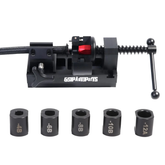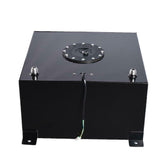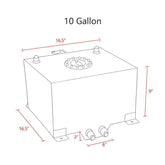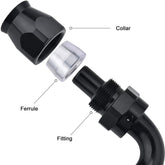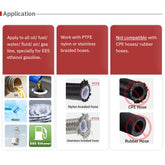What ls an Exhaust Manifold
One of the simplest bolt-on accessories to increase an engine's performance is a set of headers. Headers are designed to facilitate the engine's ability to push exhaust gases out of the cylinders.
The exhaust manifold is where the exhaust gases go after leaving the cylinder in a typical engine. Four cylinders share the same manifold in an engine with four or eight cylinders. The exhaust gases leave the manifold and enter a single pipe that leads to the catalytic converter and the muffler. The manifold turns out to be a significant source of back pressure because exhaust gases from one cylinder cause the manifold to build up pressure, which then affects the next cylinder that uses the manifold.
The purpose of an exhaust header is to get rid of the back pressure in the manifold. Each cylinder receives its own exhaust pipe rather than sharing a shared manifold. The collector, a larger pipe where these pipes converge. Each of the individual pipes is trimmed and bent to the same length as the others. By making them all the same length, it prevents back pressure from being created by the cylinders sharing the collector by ensuring that the exhaust gases from each cylinder enter the collector evenly spaced apart.

What distinguishes a header from an exhaust manifold?
Although the phrases exhaust manifold and header are sometimes used interchangeably, these two parts are not interchangeable even if they have a similar fundamental function. On regular production cars (like your commuter car), exhaust manifolds are frequently used, but headers are frequently employed in high-performance applications.
Exhaust manifolds and headers are structurally different in size and material. The Headers are made of lighter, thinner steel, while the exhaust manifolds are made of heavy, thick iron. Exhaust manifolds are shorter than headers.
The exhaust header is a factory-installed part on most vehicles, while the exhaust header is an aftermarket upgrade. Of course, there are exceptions, as some high-performance cars are equipped with factory headers.
Exhaust pipes are designed by the manufacturer to provide a good blend of performance, fuel economy and efficiency, while exhaust pipes are designed primarily to deliver maximum performance.
The manifold tends to reduce exhaust backpressure, thereby increasing performance at higher rpm and noise, while the exhaust retains some backpressure to ensure high-range drivability wider rotation as well as reduced noise.

Types of Exhaust Headers
To better understand exhaust pipes, let's break down the main types that exist:
Long-tube headers: These headers feature four tubes combined into a single header, making them suitable for mid- and low-rpm torque.
Shorty headers:These receivers are less noisy than long tube receivers. They are suitable for higher rev ranges and merge into a single exhaust over shorter distances.
Lakester headers: Made with short primary tubes, these short primary tube heads are common in vintage hot rod vehicles.
Tri-Y headers: As you can imagine, these manifolds are shaped like a “Y” to vent air. They generate more power than any other design.
Exhaust Header Benefits
Perhaps you're still debating whether an exhaust header is worthwhile. In addition to increased horsepower, you'll also notice these benefits with the exhaust:
- Increase exhaust air flow
- Improve the sound of your car
- Elimination of back pressure within your exhaust system
- Which is typically the situation with just an exhaust manifold.


